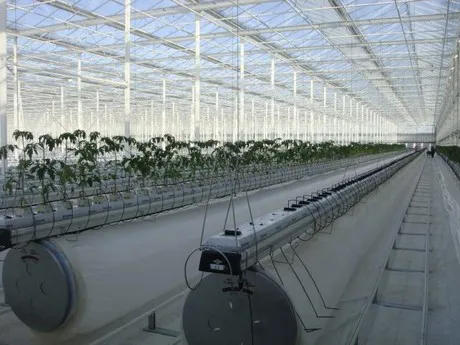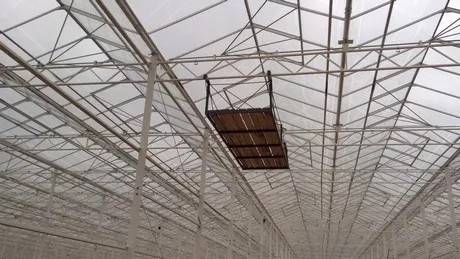Despite an all-out effort, it may not surprise most people that Russia is still a long way from being self-sufficient. In 2013, more than 800,000 tons of tomatoes and 200,000 tons of cucumbers were still imported. In the same year, Russian greenhouses yielded approximately 630,000 tons of vegetables and herbs. With this amount, Russia can meet about 34% of domestic demand.
Horticulture
The numbers vary widely in regard to current Russian horticultural acreage, ranging from 1,800 to 2,600 hectares. The estimate depends on the acreage’s condition. Part of Russian horticulture is so outdated that existing structures may hardly be called greenhouses. These are the greenhouses that were built in the Soviet era, when acreage still covered 5,000 hectares. However, under the influence of poor vegetable prices and high maintenance, arable lands declined quickly. But since self-sufficiency became a formulated goal a few years ago, the sector is once again focusing its attention; subsidies are being made available for renewing facilities, infrastructure and equipment.

The Lipetsk project was completed by KUBO, using KUBO's own Ultra-Clima concept.
Golden age?
With both domestic demand for expertise and produce on the rise, does this mean a golden age has arrived for Dutch greenhouse contractors? Sergey Berdnikov knows all about it. He has been active in the Russian sector for years. A while back, he set up his own company, GreenAgro Projects, "Until a few years ago, Russian horticulture was mostly about flowers. Greenhouses were full of roses. But the last couple of years, all you see is food crops. Tomato, but especially cucumber." Dutch greenhouse builder KUBO is also increasingly active in the former Soviet Union. "Russia is one of the countries in which we operate," KUBO’s Henk van Tuyl comments. "Characteristic of the Russian sector are the large complexes, which are now completed. Projects of less than ten hectares are considered small. Everything has to be large-scale.”
Turbulent year
Despite the favorable conditions, Russia's greenhouse sector has had a turbulent year. The fall of the ruble, late last year, slowed down development, as KUBO was quick to notice. "The exchange rate of the ruble is a problem. In the second half of last year it became more difficult for investors to get projects off the ground," Van Tuyl says. "And the high interest rate is a factor as well, currently at 15 to 25%. That's not good for development."
Delayed self-sufficiency
These developments all but delayed Russian self-sufficiency, something that didn’t go down well in the higher echelons. In April this year, a new Russian minister of agriculture was duly appointed. Aleksander Tkachev has inherited Russia’s aims to develop the domestic agricultural sector, something his predecessor failed to do, according to the government. Deputy Prime Minister Arkady Dvorkovich reconfirmed the prolonged ambitions last month. In June, the Ministry of Agriculture designated 49 horticultural projects for government support. By subsidizing these projects with 20%, about 345 hectares of greenhouses can now be completed.

12 hectares of cucumber greenhouses, designed and completed by GreenAgro Projects. It now supplies the Moscow region with fresh cucumbers.
Future
Berdnikov sees sufficient markets in the offing. "The interest is still high, but it’s somewhat off-set by subsidy - about 2/3rds of the percentage. The ruble is again stable, but still 25% more expensive than last year, resulting in investment costs being higher. The demand for vegetables increased, and many people expect prices to become only higher in the future. Now or never, that’s what many people think."
Still, Dutch contractors have to deal with the increasing Russian tendency to favor domestic material and equipment. Van Tuyl doesn’t seem to worry though: “The tendency might be there, but that doesn’t mean the Russians can do without us just yet. I expect we’ll be doing business there for a while longer.”

KUBO Greenhouse Projects B.V.
Henk van Tuyl
info@kubo.nl
www.kubo.nl
Voor meer informatie:
Sergey Berdnikov

GreenAgro Projects
info@greenagro.nl
www.greenagro.nl
